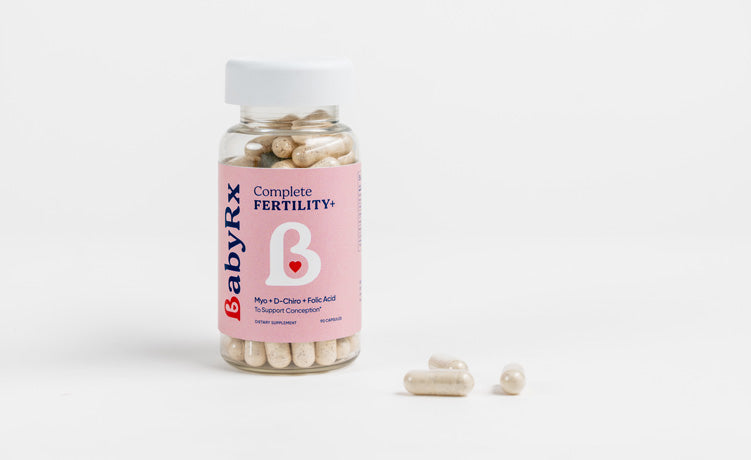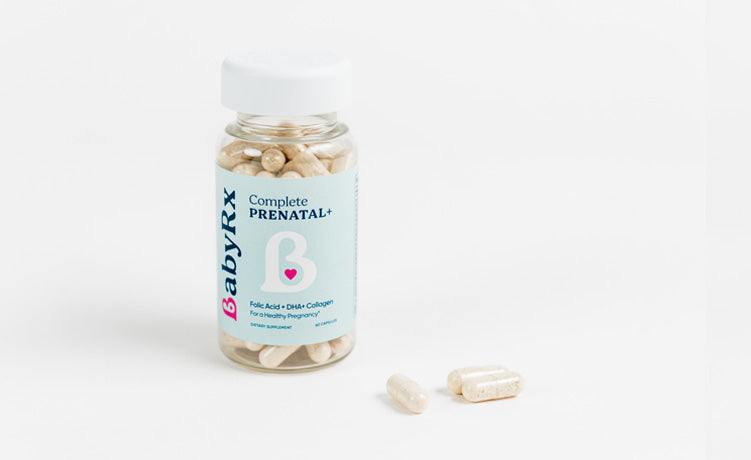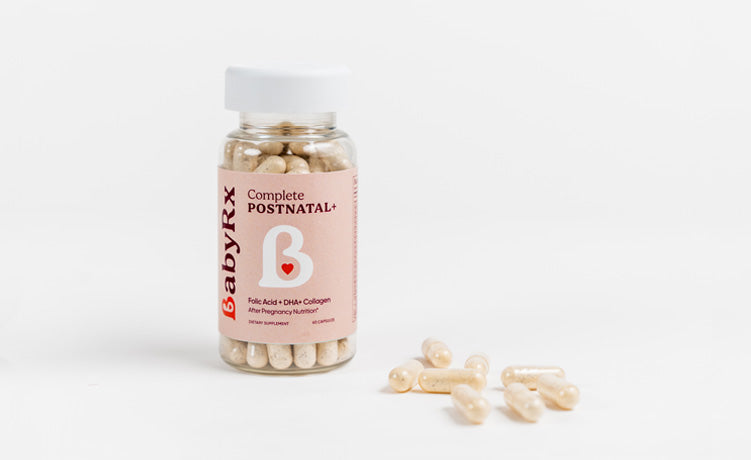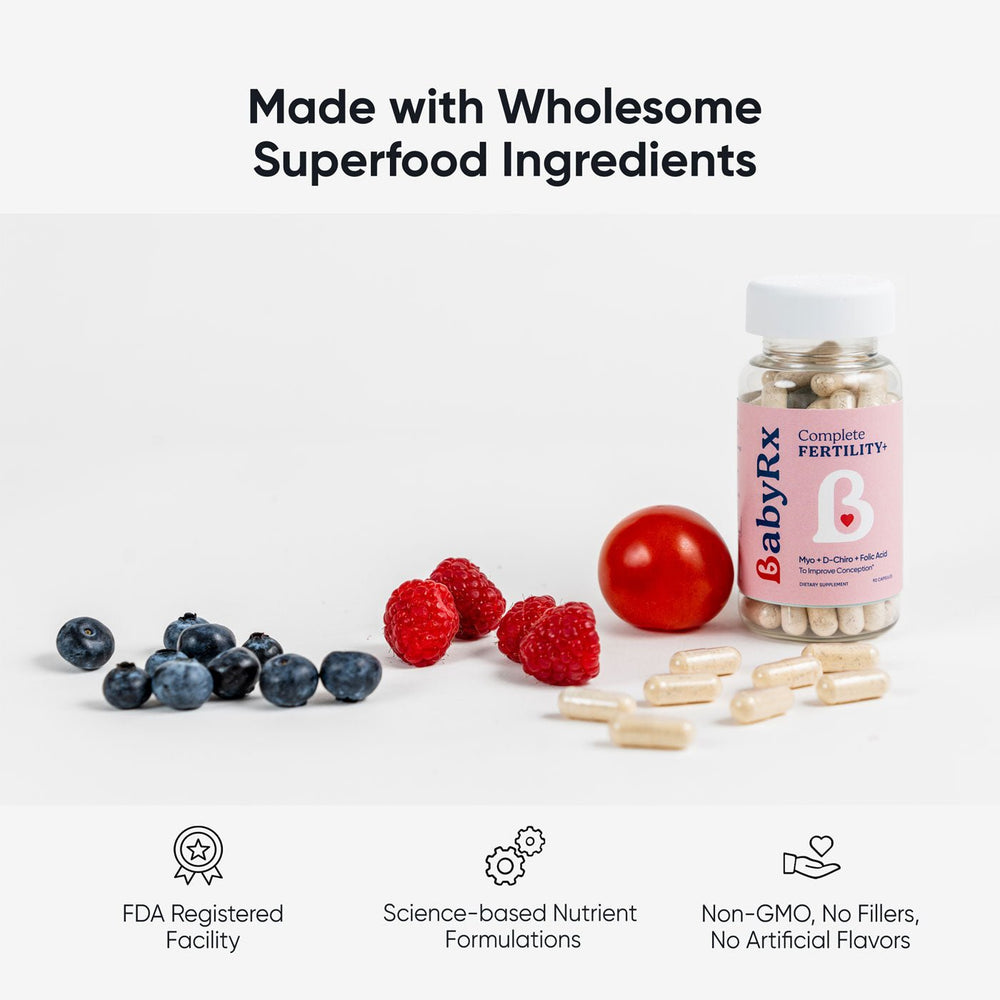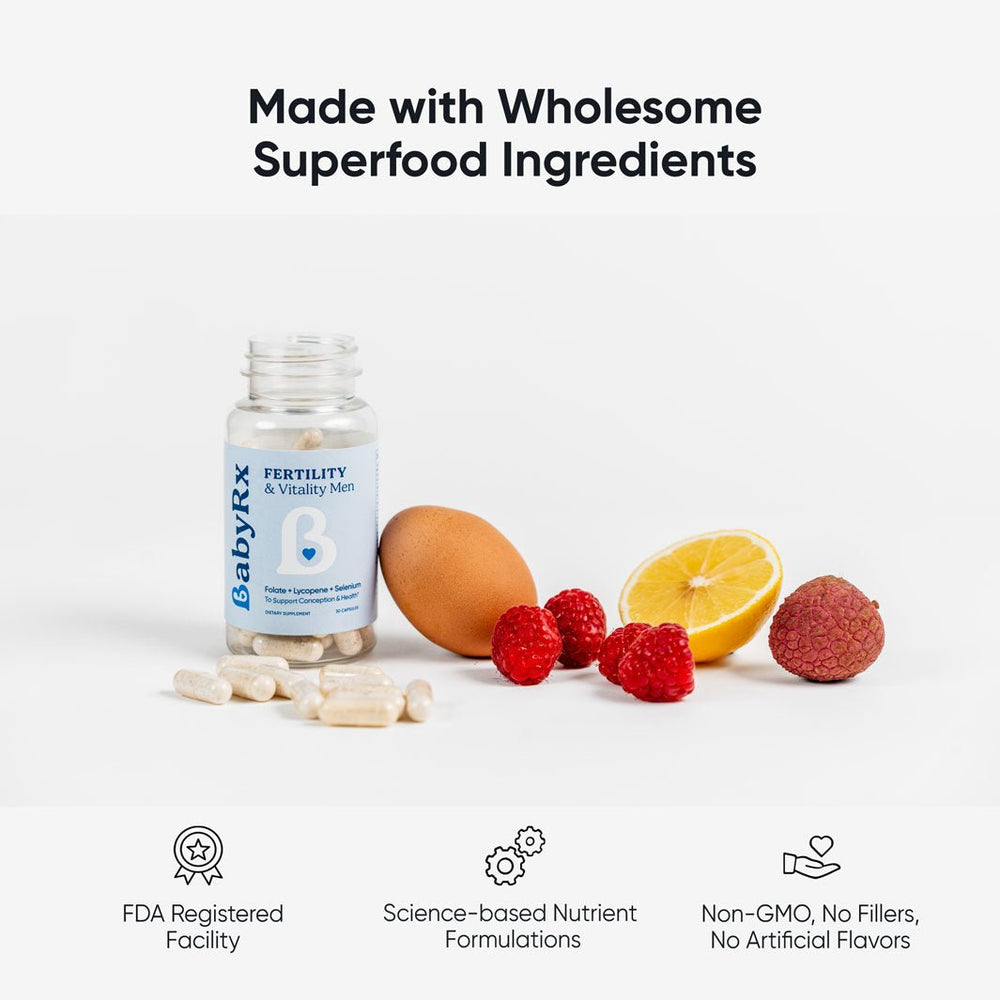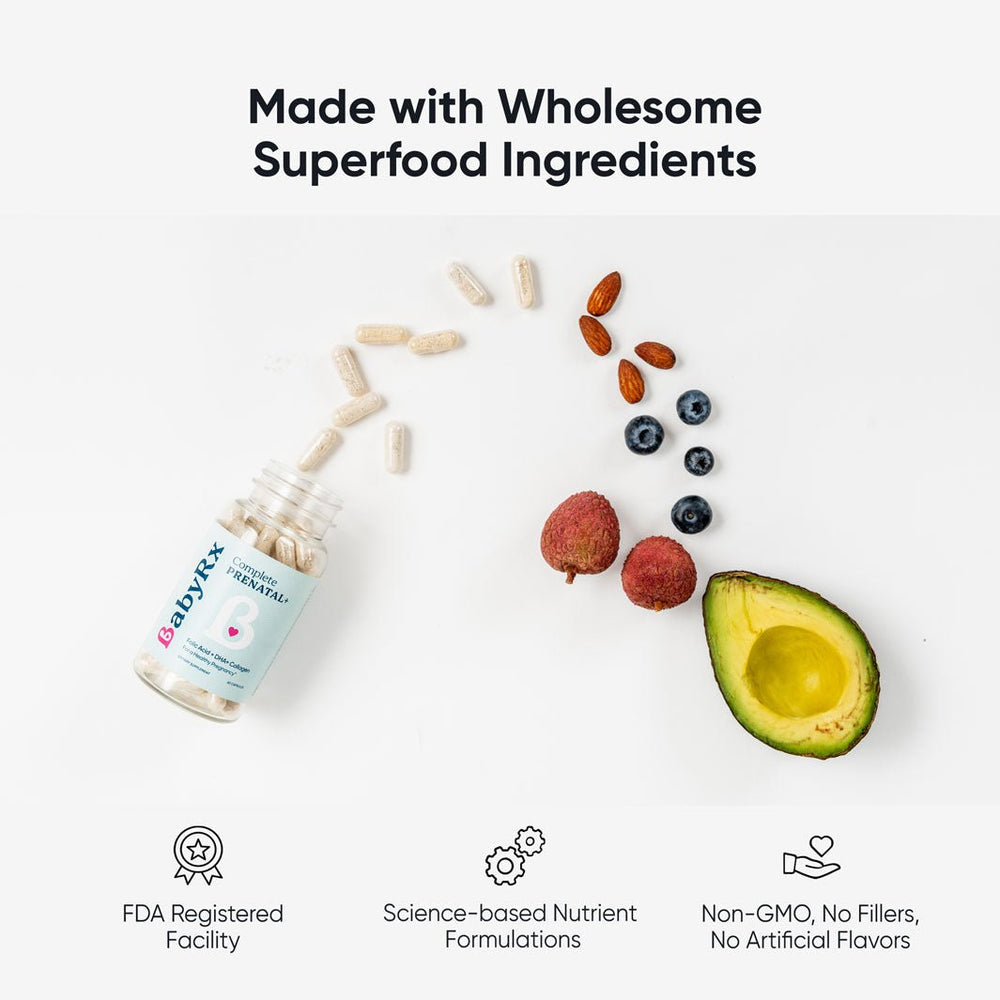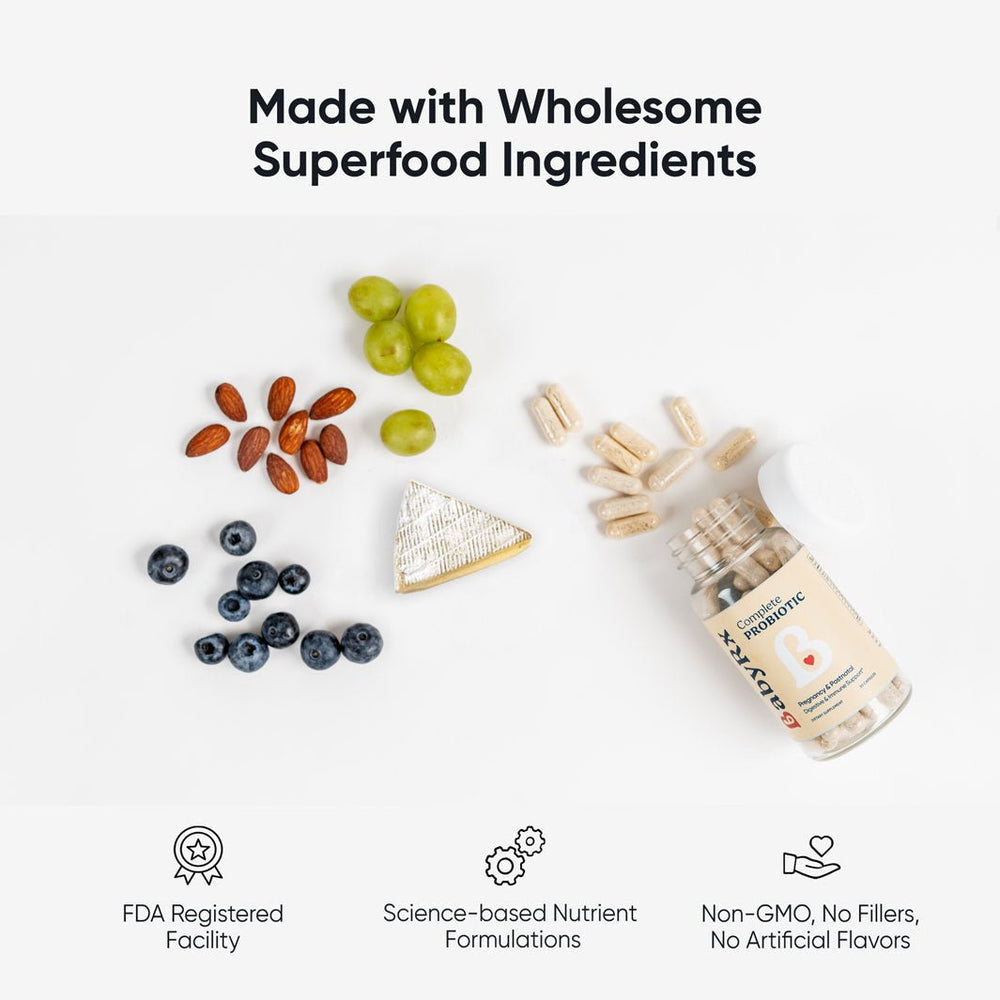Folate vs. Folic Acid – Which is better for Prenatal Vitamins?

If you’re trying to conceive or already pregnant, you’ve likely heard that folate is essential for fetal development, especially in preventing neural tube defects (NTDs), which affect the brain and spine. But when scanning the labels of prenatal vitamins, you might notice two terms: folate and folic acid. Are they the same? Which one is better for prenatal health? Let’s break it down.
What’s the Difference Between Folate, Folic Acid, and MTHF Folate?
Not all forms of folate are created equal. Folate and folic acid are both forms of vitamin B9, but their key difference lies in how the body processes them:
- Folate is the naturally occurring form found in foods like leafy greens, citrus fruits, and legumes. It is readily available for the body to use in various metabolic processes, including DNA synthesis and cell growth.
- Folic Acid is the synthetic form made in a laboratory and is used in fortified foods and most prenatal vitamins. Before the body can use it, folic acid must be converted into its active form, 5-methyltetrahydrofolate (5-MTHF). However, up to 40% of adults have a genetic variation that makes conversion less efficient and makes it more difficult for the body to utilize folic acid1.
Because of this, we opted for the active form of folate as 5-MTHF, which we include in our Complete Prenatal+, Complete Postnatal + and Complete Fertility+ to ensure optimal absorption and support during pregnancy. Folate is also known as methyl folate, L-5-MTHF, L-5-methyltetrahydrofolate, (6S)-5-methyltetrahydrofolate, and (6S)-5-MTHF, all of which refer to natural form of folate.
The National Institutes of Health (NIH), the leading authority on medical and behavioral research in the U.S., identifies 5-MTHF as the “active form of folate”. According to their research, supplementation with 5-MTHF might be more beneficial than folic acid for people with this genetic variation.
Why Is Folate (5-MTHF) So Important During Your Pregnancy?
More than 20 years ago (in 1998 to be exact) the FDA mandated that folic acid be added to processed grain products (i.e., bread, pasta, rice, and cereal). This was deemed necessary due to overwhelming evidence that folic acid supplementation before and during early pregnancy could protect against neural tube defects (NTDs). Neural tube defects are serious, often life-threatening conditions that result from problems in spinal cord development (e.g., spina bifida) and brain development (e.g., anencephaly) that occur during an early period of growth in the womb.1,2 Folate plays a crucial role in preventing NTDs and is also essential for making DNA, proteins, and red blood cells that carry oxygen throughout the body4. Since fortification begun, NTDs have decreased in the US by 35%3.
However, recent research suggests that folic acid may not be the best option for all women. Up to 40% of the population carries a genetic variant (MTHFR mutation) that reduces the body’s ability to convert folic acid into 5-MTHF efficiently1. This can lead to unmetabolized folic acid accumulating in the bloodstream, potentially interfering with the body’s natural folate metabolism.
What’s more, mothers with this MTHFR gene mutation are also at a higher risk of having a child with neural tube defects. For these individuals, taking folate in its active form (5-MTHF) may be significantly more beneficial.
Benefits of Folate During Pregnancy for Fetal Development
Folate is critical in early pregnancy — often before you may even realize you're pregnant. Aside from protecting against neural tube defects, folic acid - or folate - is essential for the synthesis of DNA, helping the body produce new cells like red blood cells, and supporting proper fetal brain and immune function.
Why is MHTF the best form of folate?
For optimal prenatal health, many experts now recommend choosing a prenatal vitamin that contains folate as 5-MTHF rather than synthetic folic acid. Here’s why:
- Higher bioavailability: 5-MTHF is already in its active form, meaning the body can use it immediately without requiring conversion.
- Better absorption for MTHFR carriers: Women with the MTHFR gene mutation can absorb and utilize 5-MTHF more effectively than folic acid5.
- Lower risk of non-conversion: Excess unconverted folic acid in the bloodstream can make it harder for the body to use folate properly and may affect immune health.
In contrast, folic acid cannot directly be used by the body. It must be converted by two chemical reactions into MTHF folate in order for your body to make use of it6.
How is Folate Important For Your Fertility Journey?
If you're trying to conceive, folate could make a meaningful difference. Studies have shown that taking folic acid before pregnancy may lower the risk of ovulatory infertility and even shorten the time it takes to get pregnant — especially encouraging if you’ve been trying for a while. Since anovulation is one of the most common causes of infertility, this makes folate an important nutrient to consume.
And if you’re going through fertility treatments like IVF, folate might help there too. Research shows that women who supplement with folic acid before IVF tend to produce more mature, higher-quality eggs7. Similarly, the EARTH study from Harvard observed a 62% higher chance of live birth among women with the highest blood folate levels compared to those with the lowest — highlighting just how influential this nutrient can be8. That’s why BabyRX includes folate in our Complete Fertility+ supplement to support conception.
How Much Folate Do You Need?
The CDC and the American College of Obstetricians and Gynecologists (ACOG) recommend:
- 400 mcg DFE daily for adults not planning to become pregnant9
- 600 to 1,000 mcg DFE daily as soon as you’re planning pregnancy, during pregnancy and postpartum10
Taking a vitamin with MTHF folate as soon as you even consider trying to conceive can provide this nutritional safety net, supporting pregnancy health, fetal development and potentially preventing pregnancy complications. Research shows it could take up to 3 months of supplementation to reach optimal folate levels to support pregnancy11.
Both our Complete Prenatal+ and Complete Postnatal+ include 1,000 mcg DFE of folate for those already pregnant or who just gave birth, and our Complete Fertility+ includes 600 mcg DFE for those trying. Experts recommend up to 8300 mcg DFE folate daily for women with high NTD risk, such as those who’ve had a past pregnancy affected6.
Women with endometriosis who conceive through IVF (in vitro fertilization) should discuss their pregnancy risks with a healthcare provider, as assisted reproductive technologies (ART) may slightly increase complications.
Sources:
- Carboni, Active Folate vs Folic Acid, https://pubmed.ncbi.nlm.nih.gov/35999905/
- CDC, Folic Acid Fortification and Supplementation, https://www.cdc.gov/ncbddd/folicacid/faqs/faqs-fortification.html
- CDC. Updated Estimates of Neural Tube Defects Prevented, https://www.cdc.gov/mmwr/preview/mmwrhtml/mm6401a2.htm
- de Franchis et al., The C677T mutation is a moderate risk factor for spina bifida, doi:10.1136/jmg.35.12.1009
- Obeid et al., 5-MTHF vs Folic Acid, doi:10.1515/jpm-2012-0256
- Skoracka et al., Female Fertility and nutrition, https://doi.org/10.1093/advances/nmab068
- NIH, Folate Fact Sheet, https://ods.od.nih.gov/factsheets/Folate-HealthProfessional/
- NUHm Association between serum folate and vitamin B-12 and outcomes of ART https://doi.org/10.3945/ajcn.115.112185
- ACOG, Prepregnancy Counseling, https://www.acog.org/clinical/clinical-guidance/committee-opinion/articles/2019/01/prepregnancy-counseling
- ACOG, Nutrition During Pregnancy, https://www.acog.org/womens-health/faqs/nutrition-during-pregnancy
- Mayo Clinic, Folate, https://www.mayoclinic.org/drugs-supplements-folate/art-20364625
